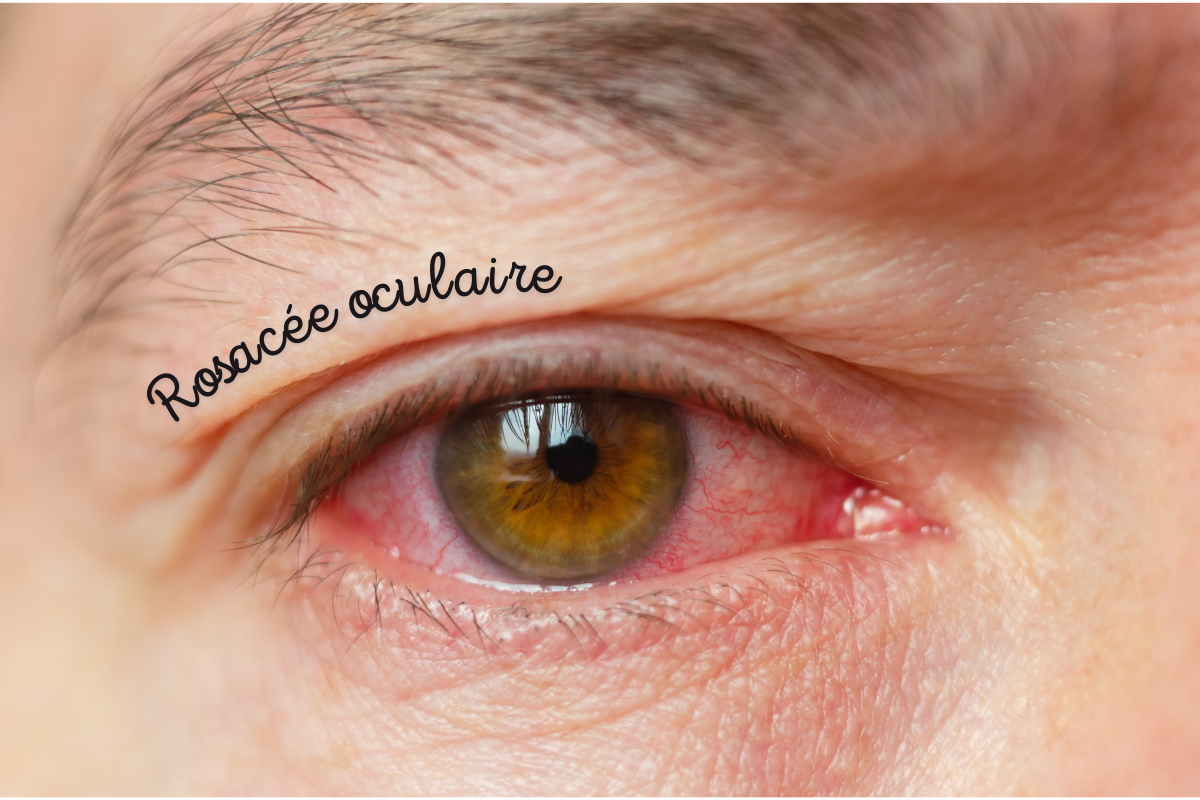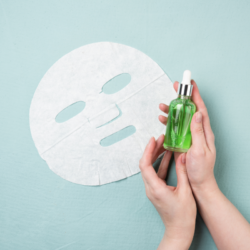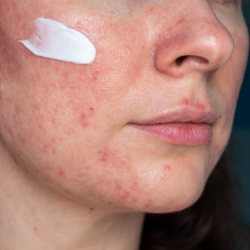Ocular rosacea is an inflammatory condition affecting the eyes and eyelids, often associated with cutaneous rosacea. It manifests itself through symptoms such as redness, burning, itching and a feeling of dryness in the eyes. Although there is no definitive cure for ocular rosacea, it can be controlled with a combination of specific treatments and care.
What is ocular rosacea?
Ocular rosacea is a form of rosacea that affects the eyes, causing inflammation of the ocular surface and eyelids. People with skin rosacea are often affected by this form, but ocular rosacea can appear independently of skin symptoms.
Symptoms of ocular rosacea
The main symptoms include:
- Redness of the eyes
- Burning and itching
- Dry eyes
- Sensitivity to light (photophobia)
- Blurred vision
- Swollen or red eyelids
- Sensation of a foreign body in the eyes
- Recurrent infections of the eyelids (blepharitis)
It is important to note that the severity of eye symptoms does not always correspond to the severity of skin symptoms. Sometimes, eye symptoms precede skin manifestations.
Causes of ocular rosacea
Although the exact causes of ocular rosacea are not fully understood, certain factors are often associated with its development. These include heredity, environmental factors, bacterial infection and blocked eyelid glands.
Other aggravating factors include:
- Spicy foods
- Alcohol consumption
- Exposure to sun and wind
- Stress and strong emotions
- Hot baths or saunas
Is Demodex responsible for ocular rosacea?
Demodex, a microscopic mite naturally present on human skin, is frequently associated with various inflammatory diseases of the ocular surface. Although ocular rosacea and blepharitis are distinct conditions, Demodex infestation is commonly observed in patients with ocular rosacea. Demodex folliculorum is particularly associated with anterior blepharitis, while Demodex brevis is more commonly associated with Meibomian gland dysfunction (MGD) and recurrent chalazion, conditions frequently seen in patients with rosacea.
Demodex can exacerbate the symptoms of ocular rosacea when its population reaches a pathological threshold, triggering an increased inflammatory response. This often manifests itself as itching, ruffling of the eyelashes and instability of the tear film. Although not all individuals carrying Demodex develop symptoms, those with weakened immunity, or systemic risk factors such as diabetes or smoking, are more likely to have these mites contribute to chronic inflammation.
Diagnosis of ocular rosacea
Diagnosis of ocular rosacea requires careful examination of the eyes and eyelids by an ophthalmologist. A full assessment, including the use of a slit lamp, is essential to identify specific signs such as telangiectasia of the eyelids, collars at the base of the eyelashes or conjunctival concretions.
In addition, questionnaires such as the Ocular Surface Disease Index (OSDI) and the Standard Patient Evaluation of Eye Dryness (SPEED ) are used to measure the severity of ocular symptoms.
Treatments for ocular rosacea
The treatment is based on a combination of daily care and appropriate medical treatments. Here are the main therapeutic approaches:
Eyelid hygiene
Eyelid hygiene is a key step in treatment. This includes:
- Using warm compresses to unblock the eyelid glands
- Cleaning the eyelids with specific wipes to remove debris and bacteria
- Gently massaging the eyelids to stimulate secretion from the Meibomius glands
Topical and systemic treatments
The use of preservative-free lubricating eye drops can help relieve dry eye symptoms. In some cases, corticosteroid eye drops are prescribed to reduce inflammation, but they must be used under medical supervision due to potential side effects.
Antibiotics
Antibiotics are often prescribed in topical or oral form. For example,azithromycin can be used for its anti-inflammatory effects on the eyelids and glands. In moderate to severe cases, oral antibiotics such as doxycycline or tetracycline are recommended to control symptoms.
Managing aggravating factors
Avoiding rosacea triggers is crucial to reducing exacerbations. This includes avoiding spicy foods, alcohol, excessive sun exposure and the use of certain irritating cosmetic products.
Ocular rosacea is a chronic disease that requires long-term management. Although there is no definitive cure, appropriate management can relieve symptoms and prevent serious complications, such as corneal ulcers. An approach combining eyelid hygiene, topical and systemic treatments, as well as patient education on aggravating factors, is essential to improve the quality of life of affected patients.
If you are experiencing symptoms of ocular rosacea, consult an ophthalmologist for an accurate diagnosis and a suitable treatment plan.
Sources
- Khadamy J. Ocular Rosacea: Don’t Forget Eyelids and Skin in the Assessment of This Stubborn Ocular Surface Disease. Cureus. 2024 Jan 1;16(1):e51439. doi: 10.7759/cureus.51439. PMID: 38298298; PMCID: PMC10828744.
- Akpek EK, Merchant A, Pinar V, Foster CS. Ocular rosacea: patient characteristics and follow-up. Ophthalmology. 1997 Nov;104(11):1863-7. PMID: 9373118.
- Cheng, A.M., Galor, A., Banoub, R. et al. The impact of ocular demodicosis on the eyes. Eye 37, 3061-3062 (2023). https://doi.org/10.1038/s41433-023-02526-8





